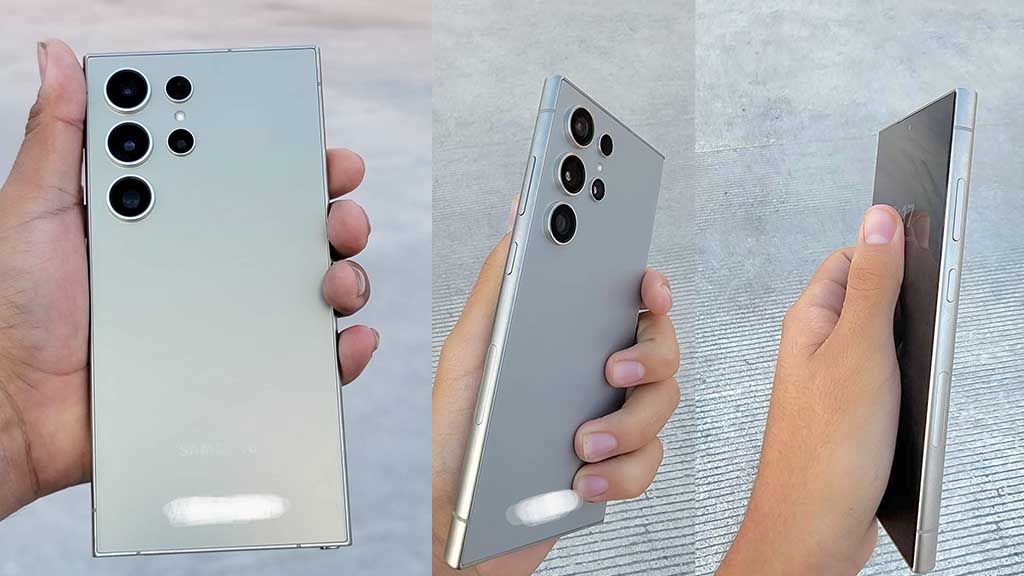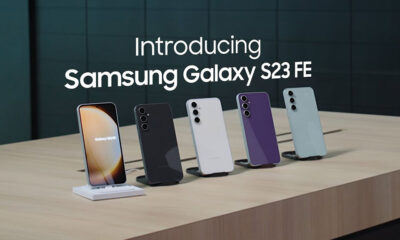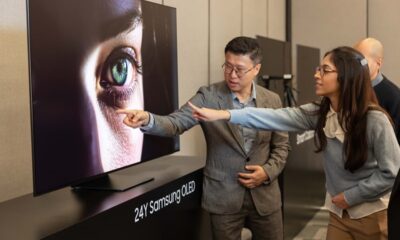News
Galaxy S24 AI Phone: Let Samsung lead the AI era, starting 2024

Samsung’s first Galaxy AI Phone, the Galaxy S24 will be unveiled in San Jose, USA on January 17, 2024. The appearance is not much different from the previous model, but it is attracting attention as an AI phone equipped with a generative AI model.
AI technology has reached an important inflection point that will determine the success or failure of smartphones. Samsung plans to use the Galaxy S24 to open the era of so-called “on-device AI”, which implements AI within the device.
Follow our socials → Google News | Telegram | X/Twitter | Facebook | WhatsApp
Samsung will install its self-developed AI Gauss x Galaxy AI in the Galaxy S24 flagships. The newly introduced Galaxy AI is implemented with on-device AI built into the device.
This is a technology that collects and processes information within the device itself. Because it does not go through an external server, processing speed is fast and security is high.
Galaxy AI is expected to be equipped with not only Samsung Gauss but also the latest AI models from global big tech, such as Open AI’s “GPT-4” and Google’s “Gemini.”
In the case of Google, it maintains a cooperation system with Samsung and Android, and additional AI models can be installed through relatively simple methods such as firmware updates.
The main function of Galaxy equipped with AI is real-time interpretation calls. Even without installing a separate external app, Galaxy AI interprets and delivers information in the other party’s language in real-time.
Device control, sentence summary, and grammar correction are also possible from the terminal itself. Generative AI is also used in major services such as photos, messages, and voice recognition.
The company has set a production plan for the Galaxy S24 series at 35.28 million units. This is an aggressive target that is about 13% higher than the previous work.
This reflects confidence in the first AI phone. The plan is to lead the next-generation smartphone competition by setting the unpack location in Silicon Valley, the US, the courtyard of rival Apple.
Like its predecessor, the Galaxy S24 series will be released in three versions: Standard, Plus, and Ultra, with approximately 15 million units, or 45% of total shipments, are Ultra models.
The change in appearance is that the edge display will disappear for the Ultra model and a titanium frame will be applied. The thickness is reduced by 0.3 mm and the weight becomes lighter.
There is no significant difference in appearance between the basic and Plus models from the previous model. In the Ultra model, one of the rear telephoto cameras is changed to 50MP, which is 5x of its predecessor.
Thanks to this, a 5x optical zoom function is possible. The remaining front and rear camera performances are the same. The basic and plus model cameras are the same as the previous model.
The Galaxy S24 Ultra could solely use the Snapdragon 8 Gen 3 for Galaxy chip, and the basic and Plus models are expected to be equipped with the Exynos 2400 chip and Snapdragon depending on the market.
News
Samsung Gaming Hub adds the biggest Xbox Game Pass titles

Owners of select Samsung Smart TVs, monitors, The Premiere 7 & 9 projectors, or The Freestyle 2nd Gen can stream Call of Duty: Black Ops 6, Flight Simulator 2024 and hundreds of other games with Gaming Hub Xbox Game Pass.
Call of Duty: Black Ops 6 and Flight Simulator 2024 are two of the most popular games of 2024. Thanks to Samsung Gaming Hub, you don’t need to download any of the Xbox Game Pass titles, no meaning no storage required – just jump in and play.
The company has also built an engaging gameplay experience designed by fans, for fans through The Six, challenging players’ knowledge and providing another way to interact with the world of Call of Duty: Black Ops 6.
Notably, Samsung’s Gaming Hub is available on a variety of Samsung screens. It includes the AI-powered 2024 TV lineup, monitors, projectors, The Premiere, and The Freestyle 2nd Gen projector, offering instant access to console-free gaming.
Anyone with a Samsung Smart TV will be able to use their remote to jump in and play. This way, Gaming Hub provides a co-branded experience, giving Call of Duty fans another way to engage with the franchise they love.
For starters: The Six offers daily trivia where players can answer a series of six questions in competition with other players around the world. Correct answers with the fastest response time will achieve higher scores.
News
Surprising: Samsung to launch Galaxy ixi-O AI Phone next year

Samsung could launch the Galaxy ixi-O AI Phone next year. The company has collaborated with LG Uplus to develop a custom smartphone. The device is said to feature Galaxy AI and LG Uplus’s AI call assistant ixi-O.
Sources citing KEDGlobal revealed that Samsung and LG Uplus working together to develop the Galaxy ixi-O AI Phone. It’s a big development in the smartphone industry, while the handset is highly likely to be Korea-limited.
Samsung fans are well aware of the Galaxy AI feature suite. ixi-O is an AI-powered digital assistant developed by Korean carrier LG Uplus. The company plans to enter the smartphone market, featuring its own-developed AI assistant.
The report indicates that Samsung and LG Uplus’ ixi-O AI Phone will launch as early as next year. The development project focuses on crafting a “real AI phone” that goes beyond simply integrating AI assistant services into a smartphone.
ixi-O comes with useful features such as AI call answering, detecting voice phishing in real-time, recording and summarizing phone calls and converting voice conversation into text – all within an on-device environment.

Image: ixi-O AI | LG Uplus Newsroom
Based on specifications, the Galaxy ixi-O AI Phone will be based on a Galaxy phone available globally. The design will match with a global Galaxy smartphone, but the software may be tweaked as per the carrier’s requirements.
A custom Galaxy phone isn’t shocking or impossible in South Korea. Samsung releases Quantum, Buddy, and Jump-branded phones in the market. The company collaborates with Korean carriers to bring these devices to mainland Korea.
The carrier introduced an on-device AI-powered ixi-O assistant earlier this month. LG Uplus will initially target its consumer base for the new AI Phone. However, the AI Assistant may be expanded to a broader audience across Korea.
News
Will Galaxy S25 Ultra will use Samsung’s Gauss2 GenAI Model?

Samsung could use Gauss2-based Galaxy AI on the Galaxy S25 Ultra. The company’s next-gen Generative AI model is 1.5 to 3x faster than the first-gen Gauss model. The DX division is already using Gauss2 to ramp up internal productivity.
Gauss2 offers improved performance and efficiency in simultaneously handling various data types. In the previous article, we’ve demonstrated its three distinct models that cater to different purposes: Compact, Balanced, and Supreme.
Samsung says the second-gen Gauss model offers equal or superior performance in response generation than leading open-source generative AI models. That said, the Galaxy AI will become faster and smarter with the inclusion of Gauss2.
Thanks to faster processing speed, Gauss2 enables quicker AI response generation. This way, the Galaxy user won’t have to wait much time. The company stated that it will continue to expand the reach of its AI-based services across all product lines.
That said, the Galaxy S25 Ultra is likely to boast Gauss2-based Galaxy AI. This upgrade will result in even faster processing of tasks and execution. Features like composition, image generation, and translation would benefit from Gauss2.
Earlier, we broke the news that Samsung is crafting an advanced AI technology. The Gauss2 press release indicates that the future Galaxy AI iteration could be integrated with knowledge graph technology to offer relevant results.
The Galaxy S24 series also uses Google’s Gemini Nano AI model. The fruitful collaboration offers futuristic capabilities on Galaxy devices. Samsung is rumored to use an enhanced version of Gemini Nano across the Galaxy S25 lineup.
Meanwhile, Samsung’s development may have indulged Gauss2 capabilities on the Galaxy S25 series. Integrated with new processors and optimized software, the company’s AI model would offer faster, reliable, and smarter results.












